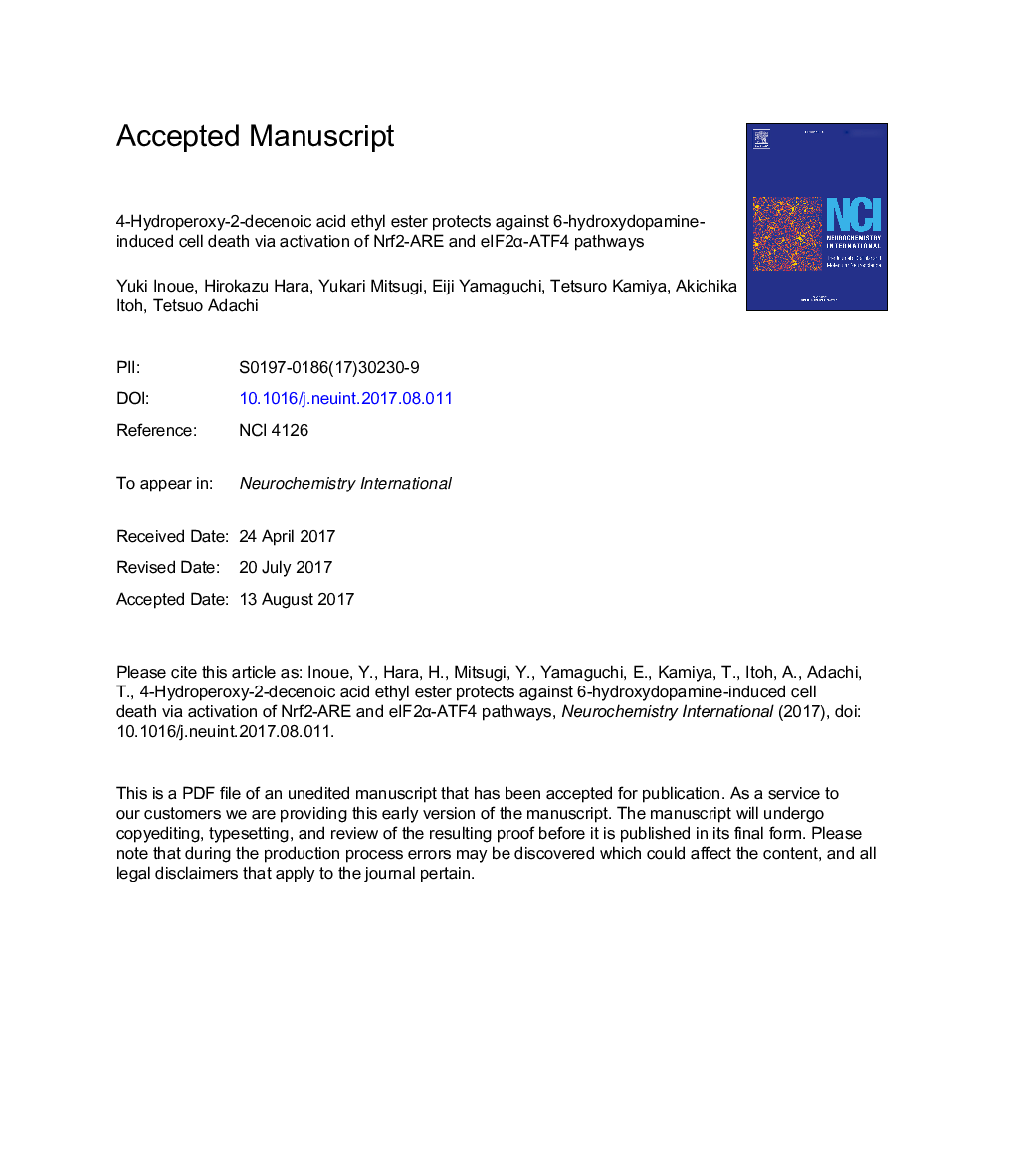| Article ID | Journal | Published Year | Pages | File Type |
|---|---|---|---|---|
| 8479014 | Neurochemistry International | 2018 | 36 Pages |
Abstract
Parkinson's disease (PD) is a neurodegenerative disorder characterized by progressive degeneration of dopaminergic neurons in the substantia nigra. Oxidative stress has been reported to be closely related to the pathogenesis and worsening of symptoms of PD. One therapeutic strategy is to alleviate neuronal injuries caused by oxidative stress. In this study, we investigated protective effects of royal jelly (RJ) fatty acids and their derivatives on oxidative stress-induced cell death using human neuroblastoma SH-SY5Y cells. 4-Hydroperoxy-2-decenoic acid ethyl ester (HPO-DAEE), a synthesized RJ fatty acid derivative, markedly induced antioxidant enzymes such as heme oxygenase-1 (HO-1). Pretreatment with HPO-DAEE protected against 6-hydroxydopamine (6-OHDA)-induced cell death. NF-E2-related factor 2 (Nrf2), a master regulator of antioxidative responses, plays a key role in the acquisition of resistance to oxidative stress. HPO-DAEE elicited nuclear accumulation of Nrf2 and activated antioxidant response element (ARE), a cis-activating regulatory element, indicating that HPO-DAEE induced expression of antioxidant genes through Nrf2-ARE signaling. Recently, the activating transcription factor-4 (ATF4) has been shown to cooperate with Nrf2 and modulate antioxidant gene expression. We also found that HPO-DAEE promoted phosphorylation of eukaryotic initiation factor 2α (eIF2α), which is an upstream effector of ATF4, and subsequent nuclear accumulation of ATF4. The eIF2α phosphatase inhibitor, salubrinal, augmented HPO-DAEE-induced HO-1 expression and protection against 6-OHDA-induced cell death. These results indicate that HPO-DAEE activates both the Nrf2-ARE and eIF2α-ATF4 pathways. Moreover, ROS generation occurred upon treatment of SH-SY5Y cells with HPO-DAEE, and the antioxidants N-acetylcysteine and glutathione suppressed HPO-DAEE-induced activation of the Nrf2-ARE and eIF2α-ATF4 pathways. Therefore, sublethal oxidative stress caused by HPO-DAEE is likely to activate both these pathways. Taken together, we conclude that HPO-DAEE elicits adaptive responses to oxidative stress through cooperative activation of the Nrf2-ARE and eIF2α-ATF4 pathways.
Related Topics
Life Sciences
Biochemistry, Genetics and Molecular Biology
Cell Biology
Authors
Yuki Inoue, Hirokazu Hara, Yukari Mitsugi, Eiji Yamaguchi, Tetsuro Kamiya, Akichika Itoh, Tetsuo Adachi,
